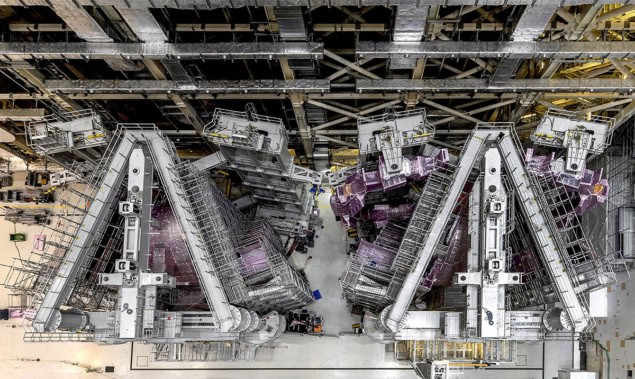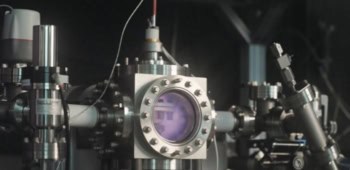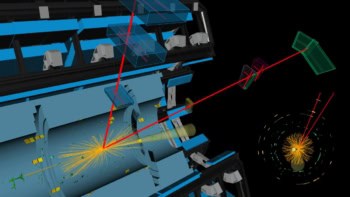Guy Matthews says that the focus on public relations is masking the challenges of commercializing nuclear fusion

“For a successful technology, reality must take precedence over public relations, for nature cannot be fooled.” So stated the Nobel laureate Richard Feynman during a commission hearing into NASA’s Challenger space shuttle disaster in 1986, which killed all seven astronauts onboard.
Those famous words have since been applied to many technologies, but they are becoming especially apt to nuclear fusion where public relations currently appears to have the upper hand. Fusion has recently been successful in attracting public and private investment and, with help from the private sector, it is claimed that fusion power can be delivered in time to tackle climate change in the coming decades.
Yet this rosy picture hides the complexity of the novel nuclear technology and plasma physics involved. As John Evans – a physicist who has worked at the Atomic Energy Research Establishment in Harwell, UK – recently highlighted in Physics World, there is a lack of proven solutions for the fusion fuel cycle, which involves breeding and reprocessing unprecedented quantities of radioactive tritium with extremely low emissions.
Unfortunately, this is just the tip of the iceberg. Another stubborn roadblock lies in instabilities in the plasma itself – for example, so-called Edge Localised Modes (ELMs), which originate in the outer regions of tokamak plasmas and are akin to solar flares. If not strongly suppressed they could vaporize areas of the tokamak wall, causing fusion reactions to fizzle out. ELMs can also trigger larger plasma instabilities, known as disruptions, that can rapidly dump the entire plasma energy and apply huge electromagnetic forces that could be catastrophic for the walls of a fusion power plant.
In a fusion power plant, the total thermal energy stored in the plasma needs to be about 50 times greater than that achieved in the world’s largest machine, the Joint European Torus (JET). JET operated at the Culham Centre for Fusion Energy in Oxfordshire, UK, until it was shut down in late 2023. I was responsible for upgrading JET’s wall to tungsten/beryllium and subsequently chaired the wall protection expert group.
JET was an extremely impressive device, and just before it ceased operation it set a new world record for controlled fusion energy production of 69 MJ. While this was a scientific and technical tour de force, in absolute terms the fusion energy created and plasma duration achieved at JET were minuscule. A power plant with a sustained fusion power of 1 GW would produce 86 million MJ of fusion energy every day. Furthermore, large ELMs and disruptions were a routine feature of JET’s operation and occasionally caused local melting. Such behaviour would render a power plant inoperable, yet these instabilities remain to be reliably tamed.
Complex issues
Fusion is complex – solutions to one problem often exacerbate other problems. Furthermore, many of the physics and technology features that are essential for fusion power plants and require substantial development and testing in a fusion environment were not present in JET. One example being the technology to drive the plasma current sustainably using microwaves. The purpose of the international ITER project, which is currently being built in Cadarache, France, is to address such issues.
ITER, which is modelled on JET, is a “low duty cycle” physics and engineering experiment. Delays and cost increases are the norm for large nuclear projects and ITER is no exception. It is now expected to start scientific operation in 2034, but the first experiments using “burning” fusion fuel – a mixture of deuterium and tritium (D–T) – is only set to begin in 2039. ITER, which is equipped with many plasma diagnostics that would not be feasible in a power plant, will carry out an extensive research programme that includes testing tritium-breeding technologies on a small scale, ELM suppression using resonant magnetic perturbation coils and plasma-disruption mitigation systems.
The challenges ahead cannot be understated. For fusion to become commercially viable with an acceptably low output of nuclear waste, several generations of power-plant-sized devices could be needed
Yet the challenges ahead cannot be understated. For fusion to become commercially viable with an acceptably low output of nuclear waste, several generations of power-plant-sized devices could be needed following any successful first demonstration of substantial fusion-energy production. Indeed, EUROfusion’s Research Roadmap, which the UK co-authored when it was still part of ITER, sees fusion as only making a significant contribution to global energy production in the course of the 22nd century. This may be politically unpalatable, but it is a realistic conclusion. The fusion industry must rise to its tritium challenge
The current UK strategy is to construct a fusion power plant – the Spherical Tokamak for Energy Production (STEP) – at West Burton, Nottinghamshire, by 2040 without awaiting results from intermediate experiments such as ITER. This strategy would appear to be a consequence of post-Brexit politics. However, it looks unrealistic scientifically, technically and economically. The total thermal energy of the STEP plasma needs to be about 5000 times greater than has so far been achieved in the UK’s MAST-U spherical tokamak experiment. This will entail an extreme, and unprecedented, extrapolation in physics and technology. Furthermore, the compact STEP geometry means that during plasma disruptions its walls would be exposed to far higher energy loads than ITER, where the wall protection systems are already approaching physical limits.
I expect that the complexity inherent in fusion will continue to provide its advocates, both in the public and private sphere, with ample means to obscure both the severity of the many issues that lie ahead and the timescales required. Returning to Feynman’s remarks, sooner or later reality will catch up with the public relations narrative that currently surrounds fusion. Nature cannot be fooled.



